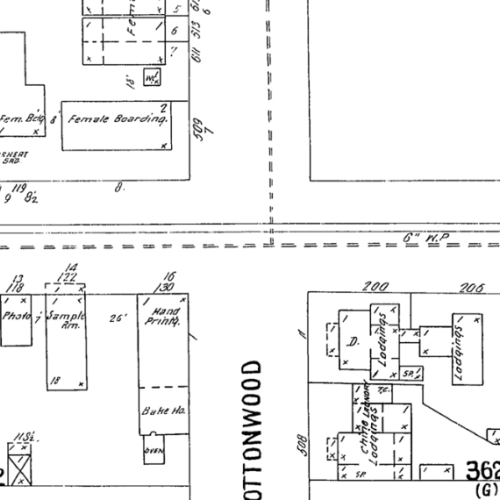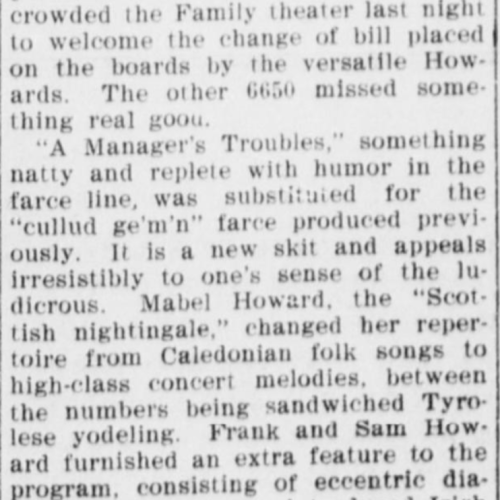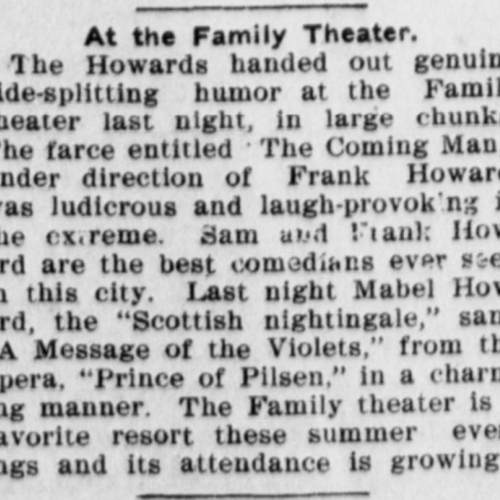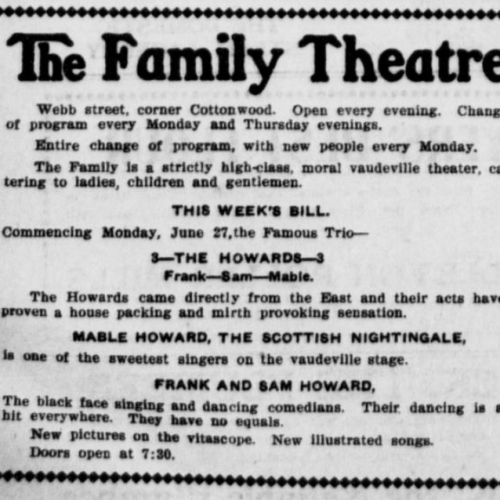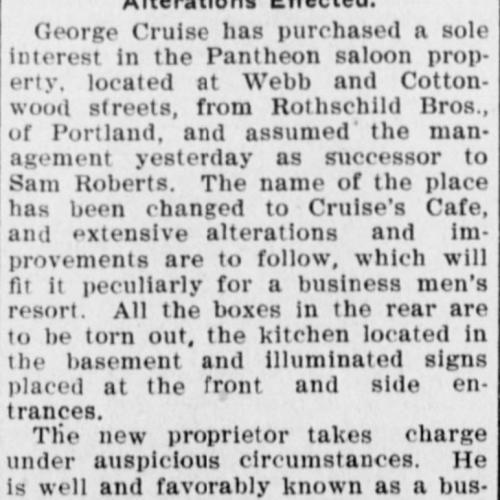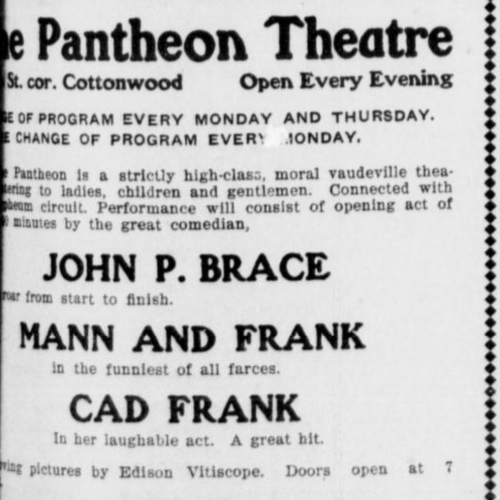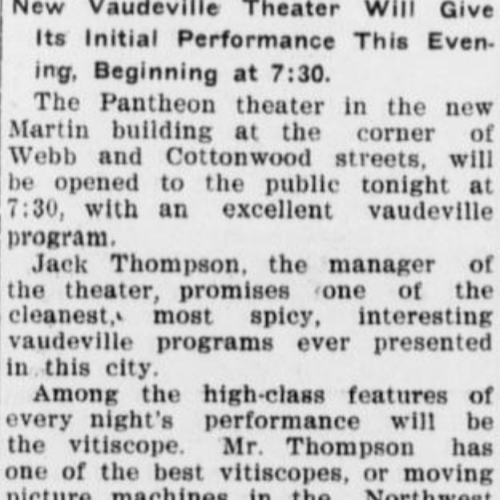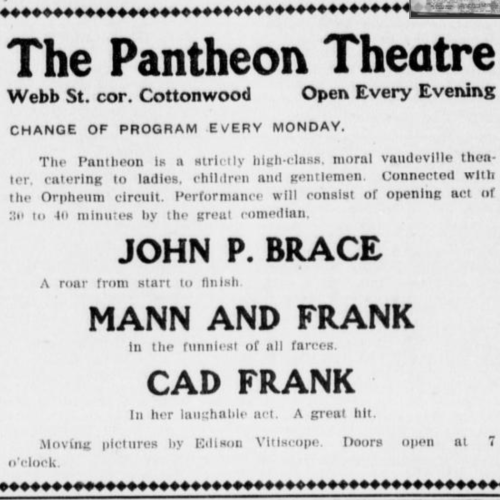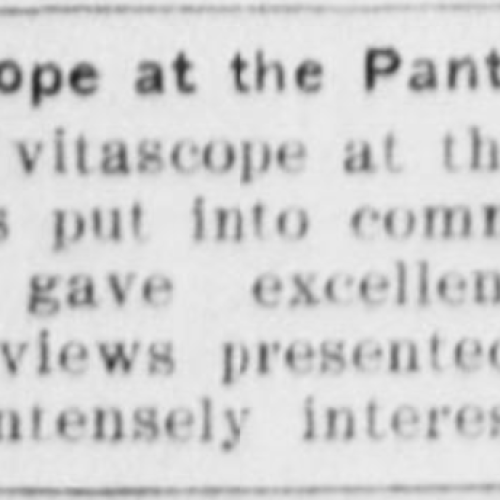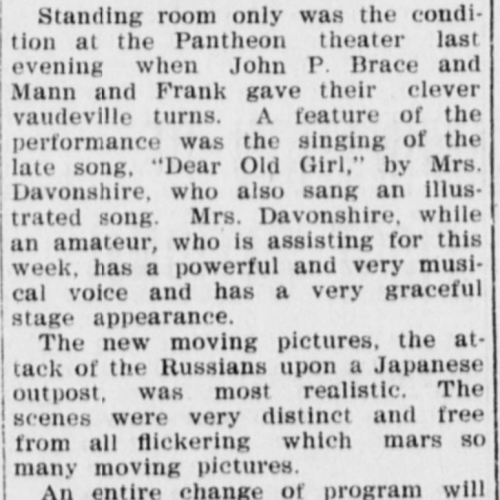The Family Theater was opened on June 13, 1904 as the Pantheon, in Pendleton, Oregon. It was located on the corner of Webb and Cottonwood (present-day 1st Street and Emigrant Avenue). It opened under the management of Jack Thompson as a “strictly moral, refined, and up-to-date theater” (Figure 1). Throughout its month as an operating theater, it consistently advertised that it was a high class theater, encouraging women and children to come see its refined entertainment.. It was primarily a vaudeville theater, programming mostly comedy acts and singing (Figure 2). However, it also had a Vitascope, which it installed a mere two days after its grand opening (Figure 3). The vitascope played moving pictures and illustrated songs, and was usually advertised in conjunction with several vaudeville acts in the newspapers (Figure 4).
Sometime between June 23 and June 27, Thompson changed the name of the theater to the Family Theater, which it maintained as its name until close. The audience of the theater did not change with its name, however. It still played clean programs that upper class patrons would approve of. That doesn’t mean its shows weren’t problematic, however; it often advertised black face performances (Figure 5). The programs changed every Monday, inviting new performers each week. On July 2, 1904, the management of the theater switched from Jack Thompson to Milo McMinn (Figure 6). This is likely when the theater started to go downhill. It was attached to a restaurant called the Pantheon Saloon, and on July 7, that restaurant switched management as well, going from Sam Roberts to George Cruise. Cruise said that his restaurant would be “in no wise connected” with an adjacent theater, which points to trouble at the Family Theater. Indeed, by July 13, an ad was placed in the paper for a room to rent (Figure 7) in the space which was previously occupied by the Pantheon. Finally, on July 14, the paper published a short article that said that McMinn had been forced to close down the Family Theater due to a lack of patronage. It had been open for just under a month. Unfortunately, no images of the theater survive as far as can be seen, since it was open for such a short period of time.
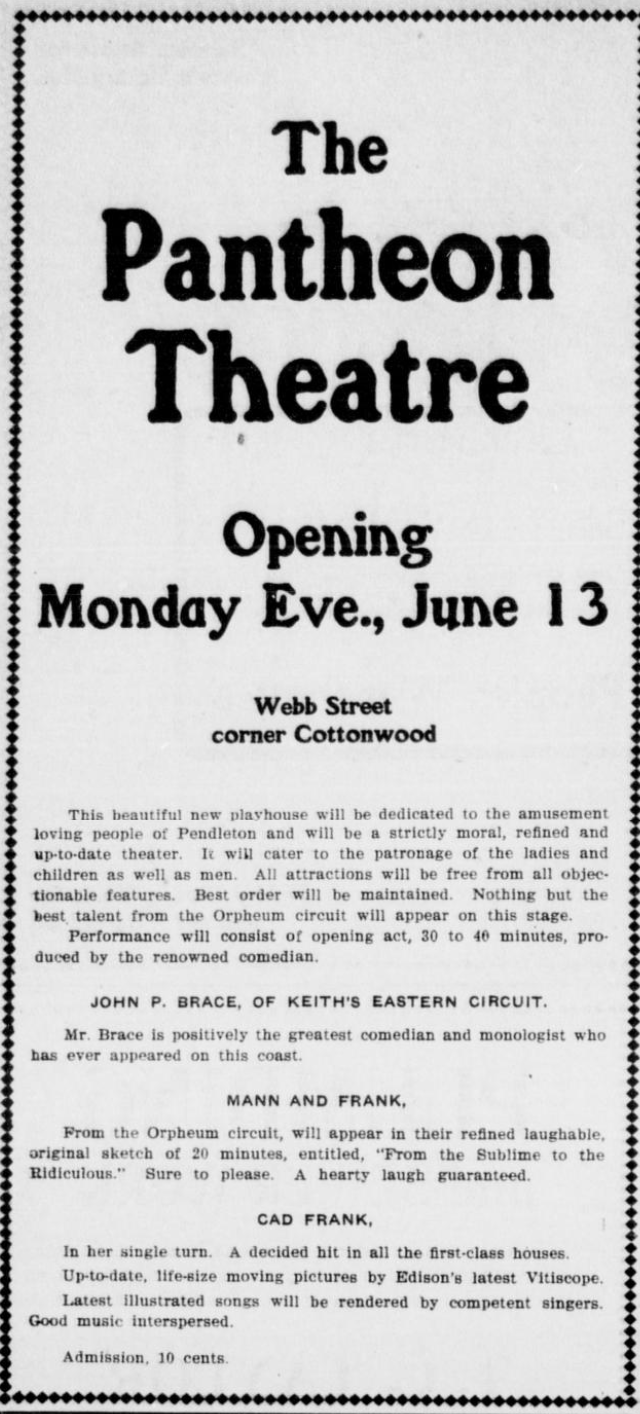
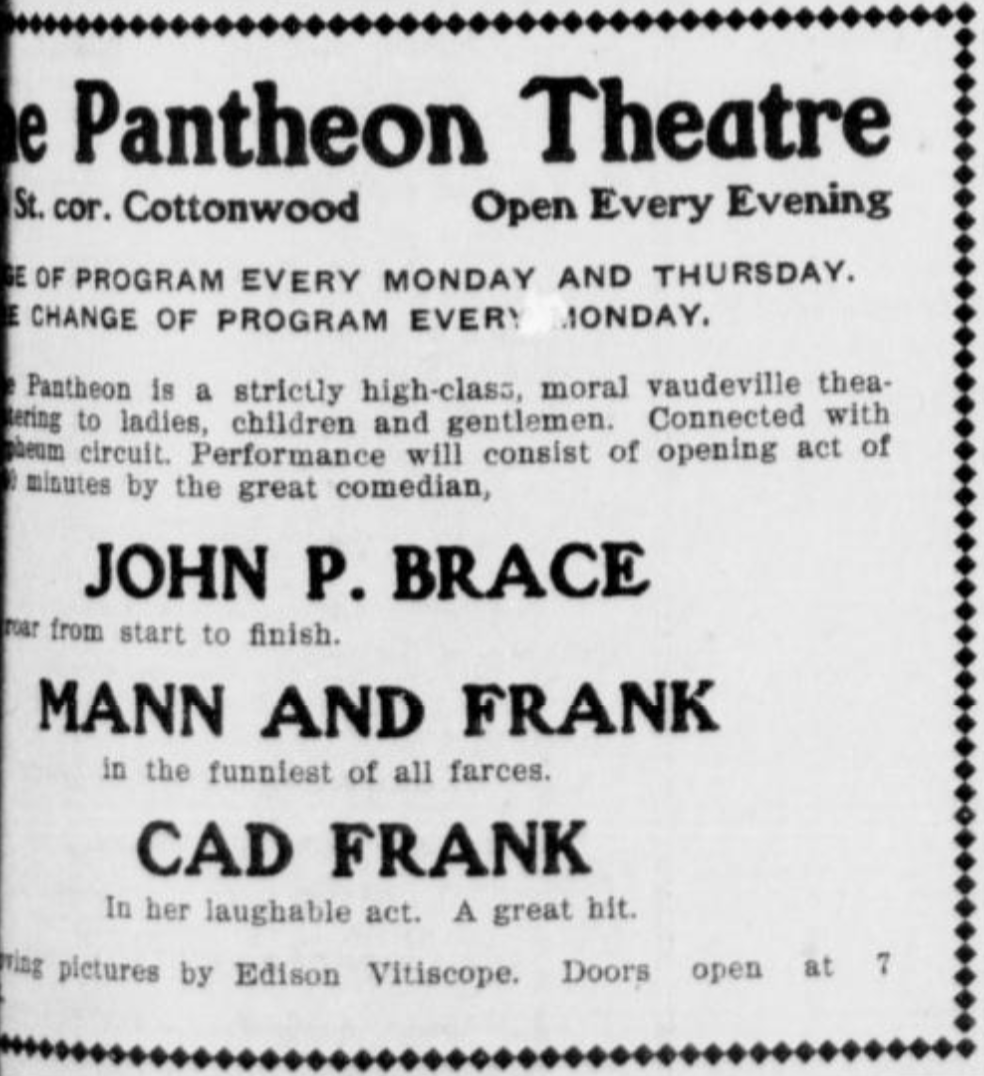

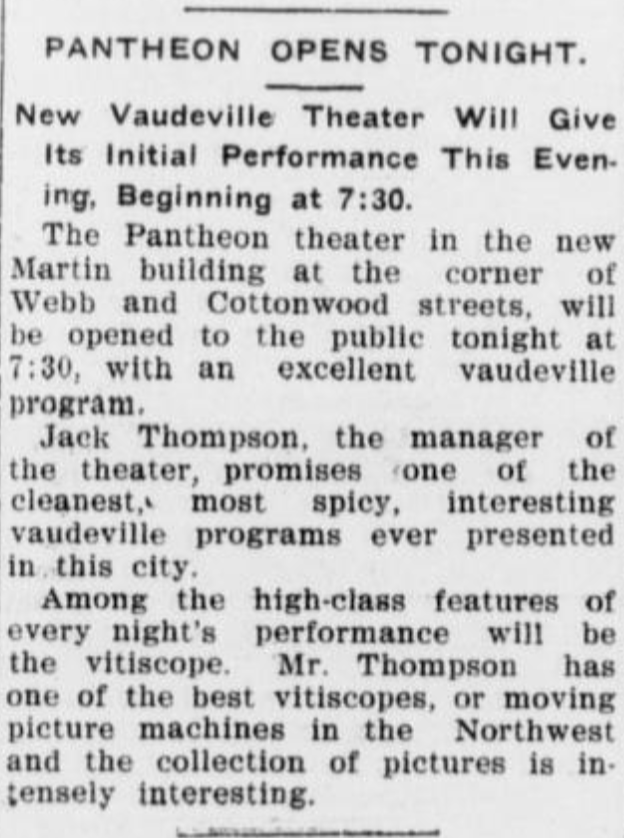
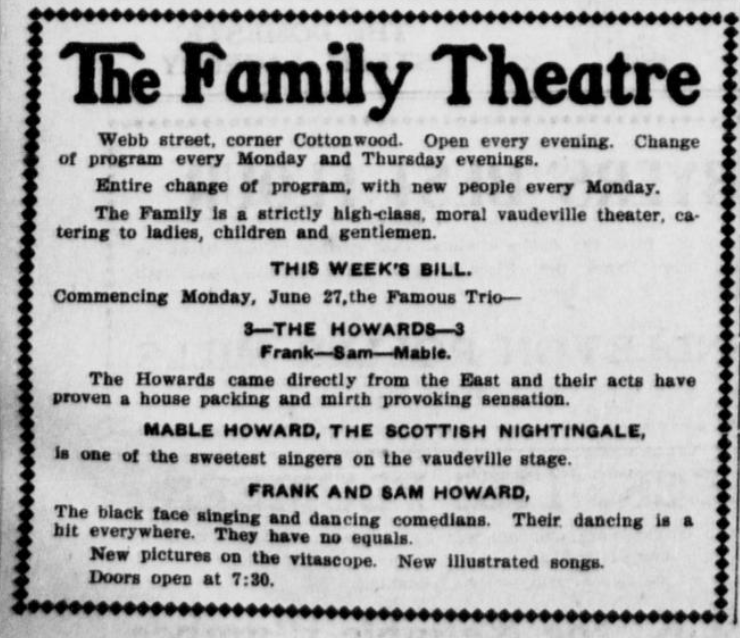
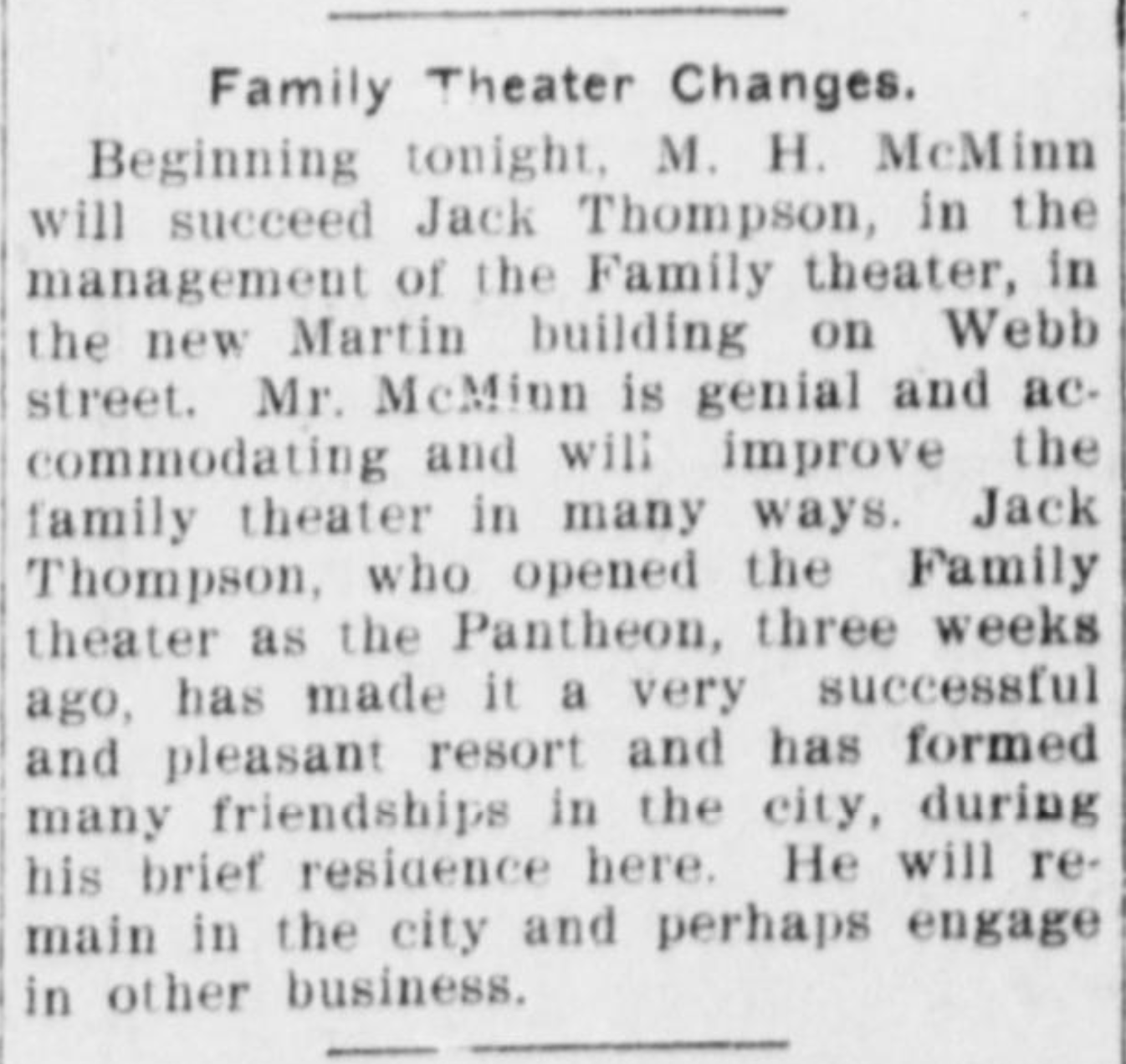

Figure 1. East Oregonian, 06-08-1904, p.6
Figure 2. EO, 05-25-1904, p.3
Figure 3. EO, 06-15-1904, p.2
Figure 4. EO, 06-13-1904, p.8
Figure 5. EO, 06-27-1904, p.6
Figure 6. EO, 07-02-1904, p.5
Figure 7. 07-13-1904, p.3
